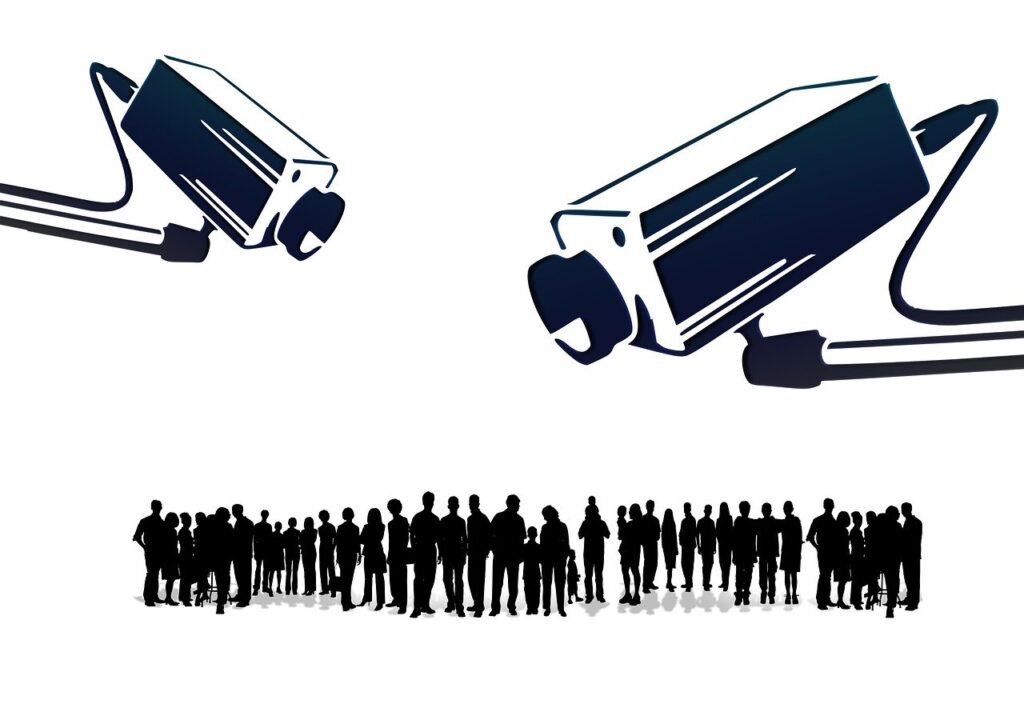
Medicare, the cornerstone of health insurance for over 68 million retired Americans, is an indispensable program designed to cover essential hospital stays, doctor visits, and preventive services as we age. For many approaching retirement, there’s a natural assumption that this comprehensive safety net will cover virtually all their healthcare needs. It’s a comforting thought, a promise of security after years of hard work, offering peace of mind when it comes to managing health in our golden years.
However, the reality for many Medicare beneficiaries reveals a different picture: significant gaps exist within Original Medicare (Parts A and B) that can lead to unexpected out-of-pocket expenses. These aren’t just minor oversights; they represent common, and often critical, services that many seniors rely on for their daily well-being and quality of life. Understanding these limitations *before* you need the care is not just helpful, it’s absolutely necessary for proactive financial and health planning.
In fact, the data from the Kaiser Family Foundation (KFF) clearly indicates that nearly 90% of Medicare beneficiaries don’t just rely on Original Medicare alone; they supplement it with additional coverage. This statistic powerfully underscores just how common it is for retirees to encounter uncovered expenses. Knowing these common blind spots ahead of time empowers you to avoid financial headaches, ensure your healthcare needs are truly protected, and find solutions that bridge these crucial gaps. Let’s dive into some of the most common services Original Medicare won’t fully cover, and what you can do about it.

1. **Regular Dental Care**
One of the most frequently encountered — and often surprising — gaps in Original Medicare coverage is for routine dental care. While we all know how vital regular dental check-ups, cleanings, and necessary procedures like fillings are to our overall health, Medicare generally doesn’t cover them. This means essential services like crowns, dentures, and even orthodontics typically come directly out of your pocket.
The distinction here is critical: Medicare focuses on medically necessary procedures, not routine maintenance or cosmetic improvements. While some medically necessary dental procedures related to surgery or trauma might qualify for coverage, the vast majority of preventive and everyday dental care does not. This can leave many seniors facing substantial costs for maintaining their oral health, which is intricately linked to their general well-being.
So, what can you do to protect your smile and your wallet? Your best bet is to look into separate dental insurance plans or explore Medicare Advantage (Part C) plans. Many Medicare Advantage plans are designed to combine your Part A and Part B coverage with additional benefits, often including dental, vision, and hearing. By comparing these plans, you can find one that offers the dental coverage you need, ensuring your routine cleanings and any necessary procedures are accounted for.
Read more about: Busting the 10 Biggest Myths About Vocal Training, Feat. Music’s Top Icons!

2. **Routine Vision Care**
Just like dental care, routine vision services are another area where Original Medicare often falls short. If you’ve been planning on getting your annual eye exam, updating your prescription glasses, or purchasing new contact lenses, you’ll likely find that Original Medicare doesn’t cover these expenses. It’s a common misconception that basic vision needs would be included, but unfortunately, they are not.
The exceptions to this rule are very specific, typically revolving around medical conditions rather than routine vision maintenance. For instance, if you require cataract surgery, Medicare may cover that procedure, as it’s deemed medically necessary to restore sight. However, for the everyday needs of maintaining good vision, such as a routine eye exam to check for changes in your prescription or to screen for common eye conditions, you’ll need to seek alternative coverage.
To address this gap, consider enrolling in a standalone vision insurance plan. These plans are specifically designed to cover a portion of the costs associated with eye exams, glasses, and contact lenses. Alternatively, many Medicare Advantage plans also include vision benefits, bundling them with your primary medical coverage. Taking the time to research these options can save you significant out-of-pocket costs and ensure you maintain clear vision as you age, which is crucial for safety and quality of life.
Read more about: Green Thumbs Not Required: 12 Houseplants That Thrive on Neglect, According to the Experts

3. **Routine Hearing Care**
Hearing is another essential sense that Original Medicare does not typically cover for routine needs. This means that if you’re looking for a routine hearing exam to check your auditory health or require hearing aids to improve your ability to hear, you’ll generally be responsible for the full cost. The expense of hearing aids alone can be substantial, making this a significant financial burden for many retirees.
Similar to vision care, exceptions under Original Medicare are usually limited to specific medical conditions or severe hearing loss requiring surgical implants. However, for the more common scenario of age-related hearing loss and the need for conventional hearing aids, Original Medicare offers virtually no assistance. This gap can severely impact an individual’s quality of life, leading to social isolation and communication difficulties.
Fortunately, you have pathways to ensure your hearing needs are met. Many Medicare Advantage (Part C) plans now include benefits for routine hearing exams and may even offer allowances towards the purchase of hearing aids. Exploring these bundled plans can be a convenient way to get comprehensive coverage. Additionally, separate hearing insurance policies are available that can help defray the costs. Proactively addressing potential hearing loss is vital for maintaining an active and connected lifestyle in retirement.
Read more about: Unlock Your Inner A-Lister: 14 Secret Routines Famous Actors Use to Master Pages of Dialogue!
4. **Most Outpatient Prescription Drugs**
Perhaps one of the most critical and widely recognized gaps in Original Medicare (Parts A and B) is its lack of coverage for most outpatient prescription medications. This detail often catches many new beneficiaries off guard, assuming that such a fundamental aspect of healthcare would be included in their primary medical insurance. For seniors managing chronic conditions or taking multiple medications, this uncovered expense can quickly escalate into a substantial financial burden.
Without a dedicated plan for prescription drugs, the cost of necessary medications can become a major concern, potentially leading individuals to make difficult choices about their health. This is precisely why Medicare created Part D plans. These plans are offered through private insurers approved by Medicare and are specifically designed to fill this significant void, providing coverage for a wide range of outpatient prescription drugs.
The solution here is straightforward but requires proactive engagement: you need to enroll in a Medicare Part D plan. These plans vary in terms of premiums, deductibles, formularies (lists of covered drugs), and cost-sharing. Another popular option is to choose a Medicare Advantage (Part C) plan, as many of these plans bundle prescription drug coverage (Part D) directly into their offerings, along with other benefits like vision, dental, and hearing. Comparing different Part D or Medicare Advantage plans based on your specific medication needs is crucial to ensure your prescription costs are manageable.

5. **Routine Foot Care**
It might seem like a minor detail, but routine foot care is another area where Original Medicare draws a hard line, leaving many beneficiaries to pay out of pocket. Services like getting your toenails trimmed, removing corns and calluses, or other general upkeep for your feet are typically not covered. While these might seem like small costs individually, they can add up, especially for those who need regular podiatric attention.
The key distinction for Medicare coverage in foot care lies in medical necessity. If you have a specific medical condition, such as diabetes, that necessitates specialized foot care to prevent serious complications like infections or ulcers, then you might be eligible for coverage. Medicare Part B *does* cover foot exams or treatment related to nerve damage due to diabetes or specific foot injuries or ailments like bunions, hammertoe, and heel spurs. However, for purely routine, preventive care without an underlying medical issue, you’re generally on your own.
If regular foot health maintenance is important to you, and it should be, planning ahead is essential. You might consider setting up a separate savings program specifically for these costs. For those with chronic conditions that require more frequent or specialized foot care, discussing your options with a podiatrist can help clarify what might be covered and how to budget for the rest. Staying proactive about foot health can prevent more serious issues down the road.
Read more about: Unlock Your Inner Star: Budget-Friendly Celebrity Beauty Hacks You Can Actually Try Today

6. **Cosmetic Procedures**
When it comes to enhancing your appearance purely for aesthetic reasons, Original Medicare generally doesn’t open its purse strings. Most elective cosmetic procedures, such as facelifts, Botox injections, tummy tucks, or other treatments aimed solely at improving your look, fall squarely into the “not covered” category. Medicare views these as non-essential services, meaning you’ll be footing the entire bill yourself if you choose to pursue them.
However, there’s a vital distinction when cosmetic surgery serves a clear medical necessity. If a procedure is required to improve the function of a malformed part of the body, or for reconstructive purposes after an accident, injury, or illness – for example, breast reconstruction following a mastectomy – then Medicare *might* provide coverage. The determining factor is whether the procedure is deemed medically necessary rather than purely elective.
If you’re considering any procedure that might have both cosmetic and functional benefits, it is absolutely crucial to have a thorough discussion with your doctor. They can help you understand whether your specific situation meets Medicare’s criteria for medical necessity. Otherwise, for purely aesthetic enhancements, budgeting these costs as personal expenses separate from your healthcare plan is the most practical approach.
Read more about: $100 Skincare Revelation: 14 Dermatologist-Approved Drugstore Gems That Deliver Luxury Results Without the Hefty Price Tag

7. **Non-Medical Services**
While Medicare is designed to cover essential medical treatments and hospital care, it does not extend to what it considers “non-medical services” within a healthcare setting. This can be a surprising oversight for beneficiaries who expect comprehensive comfort during a hospital stay. For instance, if you desire a private hospital room purely for personal preference, Medicare will not cover the additional cost beyond a standard semiprivate room.
Beyond room choice, other amenities commonly found in hospitals are also excluded from Medicare coverage. This includes the cost of hospital television and telephone services, which are often considered conveniences rather than medical necessities. Furthermore, administrative charges for things like canceled or missed appointments, or requests for copies of your x-rays or medical records, are typically not covered by Medicare.
Understanding these exclusions means you’ll need to anticipate and budget for these comfort-related or administrative expenses out of your own pocket. If you have a Medicare Advantage Plan, it’s always worth checking with your plan provider to see if they offer any additional coverage for these types of services, as some private plans might have more flexible benefits. However, for Original Medicare beneficiaries, recognizing these limits upfront helps you avoid unexpected charges during a hospital visit or for routine administrative tasks.
Read more about: The Quiet Revolution: How Meditation Apps Are Reshaping American Wellness in an Anxious World
8. **Care While Overseas**
Picture this: you’ve finally planned that dream retirement vacation, maybe a cruise through the Mediterranean or an extended stay with family abroad. It’s an exciting prospect, but here’s a crucial piece of financial planning many retirees overlook: Original Medicare and most Medicare Advantage plans offer virtually no coverage for medical costs incurred outside the United States. This means that if you have an unexpected medical emergency while exploring a foreign city, you could be left footing a substantial bill.
The reality is that Medicare’s reach is largely confined to U.S. borders. While there are a few highly limited exceptions, such as emergency care if you’re in Canada or Mexico within a certain proximity to the U.S. border, these are rare and specific. For the vast majority of international travel, any health emergency – from a minor infection to a serious accident requiring hospitalization – will not be covered by your standard Medicare plan. This oversight can quickly turn a relaxing trip into a financial nightmare.
So, what’s your game plan for global adventures? Don’t let this deter your travel dreams; instead, arm yourself with the right supplemental coverage. Some Medigap policies, for instance, offer foreign travel emergency coverage, typically paying 80 percent of specific medically necessary emergency care after a deductible, up to a lifetime limit of $50,000. Another excellent option is to purchase a dedicated travel insurance policy, though it’s vital to check the fine print for exclusions, especially concerning pre-existing conditions. For truly intrepid travelers, considering medical evacuation (medevac) insurance can provide peace of mind, ensuring you can be transported to a suitable medical facility or even back home if a serious emergency arises.
Being prepared for healthcare abroad isn’t just smart; it’s essential for enjoying your retirement adventures without a cloud of financial worry hanging over your head. Research your options thoroughly before you book that flight, ensuring your health is as protected as your passport.
Read more about: Hidden Costs: The 13 Critical Ways You Could Be Voiding Your Car’s Warranty and How to Prevent It

9. **Long-Term Care Facilities**
As we age, the need for long-term care becomes a significant consideration for many families. This can range from assisted living facilities to full-time nursing home care. Here’s where Original Medicare presents one of its most substantial gaps: it generally will not cover these types of long-term custodial care needs. This is a critical distinction, as the costs for such care can be astronomical, potentially reaching over $90,000 a year for a semi-private room in a nursing home, and well over $100,000 for a private room, with variations depending on location.
Medicare primarily focuses on acute medical care, like hospital stays and doctor visits. While it *does* cover limited stays in skilled nursing facilities (SNFs), these are typically short-term, medically necessary stays following a hospital discharge, such as recovery from a hip replacement requiring inpatient physical therapy for a few weeks. It’s designed for rehabilitation, not for ongoing assistance with daily activities like bathing, dressing, or eating, which is what long-term care facilities provide. This means that if you need continuous, non-medical support for chronic conditions, you’ll almost certainly be paying out of your own pocket.
Given these daunting costs, proactive planning for long-term care is paramount. Many individuals choose to purchase long-term care insurance, a specialized policy designed specifically to cover these expenses. It’s also wise to incorporate potential long-term care costs into your overall retirement financial planning. For veterans, specific programs might offer some access to long-term care benefits. Furthermore, if you have limited income and savings, Medicaid can be a crucial safety net, as it may help fill in these significant gaps, but typically only after you’ve exhausted most of your personal assets.
Understanding this limitation now allows you to explore various avenues for coverage and financial preparation, safeguarding your assets and ensuring quality care should the need arise. It’s a conversation best had sooner rather than later to protect your future.
Read more about: Beyond the Badge: Why a ‘Bargain’ Used Luxury Car Can Lead to Unexpected Financial Headaches and Repair Nightmares
10. **Custodial Care at Home**
While the focus often shifts to nursing homes, many seniors prefer to age in place, receiving care in the comfort of their own homes. This brings us to another often-overlooked Medicare gap: custodial care at home. This type of care involves assistance with daily living activities (ADLs) such as bathing, dressing, eating, light housekeeping, laundry, and meal preparation. If these are the *only* types of care you need, Original Medicare generally will not cover them.
Medicare’s primary role is to cover “skilled care” – services provided by licensed medical professionals, such as nurses or therapists, to treat an illness or injury. Custodial care, on the other hand, is considered “unskilled care” and focuses on personal assistance rather than medical treatment. Even if you are recovering from an illness and receiving skilled home health care, Medicare typically only covers personal care services if they are incidental to the skilled care and you are homebound. Once the skilled need ends, the custodial care coverage usually stops.
This means that for ongoing, non-medical support to help you maintain independence at home, you’ll be responsible for the full cost. The expense of hiring home health aides can quickly add up, making it a substantial financial consideration for many retirees.
To bridge this gap, proactive exploration of alternatives is key. Long-term care insurance policies are specifically designed to cover both facility-based and in-home custodial care. Additionally, state and local programs, as well as some non-profit organizations, might offer services or financial assistance for in-home support, especially for those with limited income. Certain Medicare Advantage plans may also offer limited benefits for in-home support, so it’s always worth checking with your plan provider. Preparing for these potential needs ensures you can choose how and where you receive care without financial strain.
Read more about: United States Immigration and Customs Enforcement: An Overview of Mission, Structure, and Evolution

11. **Alternative Therapies**
The world of healthcare is continually expanding, with many individuals turning to alternative and complementary therapies for chronic conditions or overall wellness. However, if you’re hoping Medicare will cover treatments like massage therapy, most forms of acupuncture, or other holistic approaches, you’ll likely be disappointed. Original Medicare’s coverage for alternative medicine is remarkably narrow and comes with strict limitations.
Take massage therapy, for example. While research suggests it can provide short-term relief for chronic pain, Medicare does not cover it, even when prescribed by a doctor. Similarly, chiropractic services are only covered under very specific circumstances: when manipulation of the spine is medically necessary to fix a subluxation (when one or more bones of the spine move out of position). If you’re seeking chiropractic care for general back pain or wellness, it’s generally not covered.
Acupuncture offers a slightly more nuanced picture. While Medicare historically excluded it, recent updates allow beneficiaries with chronic lower-back pain (lasting 12 weeks or longer) to receive up to 20 acupuncture treatments per year. This provision aims to provide an alternative to prescription opioids for pain management. However, for acupuncture treating other conditions, or for experimental procedures and treatments, coverage is typically denied.
If these alternative therapies are integral to your wellness routine, be prepared to pay for them out-of-pocket. Some Medicare Advantage plans *might* offer limited coverage for certain alternative therapies like massage, so it’s always advisable to contact your specific plan provider. For most, however, these will be personal expenses, requiring you to budget for them separately. Discussing Medicare-approved pain management strategies with your healthcare provider is also a smart move to ensure you’re utilizing covered options.
Read more about: Remember Them? 12 Nineties Game-Changers Who Look Seriously Unrecognizable Today!

12. **Concierge Care Fees**
A growing trend in healthcare is “concierge medicine,” where physicians or practices charge an annual membership fee for enhanced access and more personalized care. This model often promises quicker appointments, extended visit times, and direct access to your doctor, appealing to those who desire a more attentive healthcare experience. However, there’s a vital point to understand for Medicare beneficiaries: Original Medicare will not cover these membership or retainer fees.
These concierge fees can range from hundreds to thousands of dollars annually, and they are purely for the privilege of accessing the concierge model, not for the medical services themselves. If your concierge doctor participates in Medicare, once you’ve paid the membership fee, that physician must still bill Medicare for services covered by Part B, and you’ll be responsible for the usual copays and coinsurance rules as if it were a standard Medicare-participating practice. In essence, you’re paying an extra fee on top of your standard Medicare costs for added convenience and access.
This arrangement can be particularly confusing, as it feels like an additional healthcare expense without direct Medicare reimbursement. Before signing up for a concierge practice, it’s crucial to clarify exactly what the membership fee covers and what it does not, particularly concerning Medicare’s policies.
Your options here are clear: you can choose to pay the concierge fee out of pocket to enjoy the benefits of this model, or you can opt for a traditional physician who does not charge such a fee. If you’re considering a concierge practice, have an open conversation with your physician about the terms and how Medicare will be billed for actual medical services. Some states also have laws offering consumer protections for these arrangements, so it’s worth investigating local regulations to ensure you’re making an informed decision about your healthcare access.
Read more about: From ‘Siesta Key’ to Billions: Unpacking Sam Logan’s Unexpected Fortune and Strategic Empire Building

13. **Most Non-Emergency Transportation**
Navigating healthcare appointments can sometimes be a challenge, especially for individuals with mobility limitations or those who no longer drive. It’s a common assumption that transportation to and from medical appointments would be covered, but Original Medicare generally draws a firm line here. Most non-emergency transportation services, including ambulette services (wheelchair-accessible vans for non-emergency transport), are typically not covered.
Medicare primarily covers ambulance services only when they are medically necessary and when other transportation methods could endanger your health. This means if you need a ride to a routine doctor’s appointment, a physical therapy session, or any other non-emergency medical service, you’ll likely be responsible for arranging and paying for that transportation yourself. This can add an unexpected layer of cost and logistical complexity for many seniors.
The absence of coverage for non-emergency medical transport can create significant barriers to care, especially for those living in rural areas or without family support. Missing appointments due to transportation issues can lead to postponed treatments, worsening conditions, and ultimately, higher healthcare costs down the line.
So, what can you do to ensure you get to your appointments reliably? Firstly, investigate if any local community programs, senior centers, or non-profit organizations offer free or low-cost transportation services for medical appointments. Some Medicare Advantage plans are beginning to include benefits for non-emergency medical transportation, recognizing its importance for patient access, so checking your specific plan’s benefits is highly recommended. Otherwise, budgeting for these transportation costs, or relying on family and friends, becomes essential. Planning ahead for these logistical needs is as important as planning for the medical care itself.

14. **Experimental Procedures and Treatments**
The frontier of medicine is constantly evolving, with new procedures and treatments emerging to combat various diseases and conditions. However, innovation often comes with a caveat when it comes to insurance coverage, and Medicare is no exception. Original Medicare generally does not cover experimental or investigational procedures and treatments. This means that if a new therapy or diagnostic method has not yet been widely recognized as safe and effective by the broader medical community and approved by regulatory bodies, you will likely be responsible for the full cost.
This policy is rooted in Medicare’s commitment to cover “medically necessary” services that meet accepted medical standards. Treatments that are still undergoing clinical trials, are considered unproven, or are not yet approved by the Food and Drug Administration (FDA) for a specific use often fall into this “experimental” category. While these cutting-edge therapies hold promise, Medicare’s conservative approach means beneficiaries cannot rely on it for payment.
This can be particularly challenging for individuals facing serious or rare conditions for which conventional treatments have been exhausted, and experimental options offer a glimmer of hope. The costs associated with such treatments can be extraordinarily high, making the lack of coverage a significant financial barrier.
If you and your doctor believe an experimental procedure is your best course of action, a thorough discussion about its potential cost and coverage implications is absolutely vital. Sometimes, if a procedure is part of a Medicare-approved clinical trial, certain costs might be covered, but this is highly specific and requires careful verification. Otherwise, you’ll need to explore personal financing options, charity programs, or specific disease foundations that might offer assistance. Understanding that “innovative” does not automatically mean “covered” by Medicare is a crucial piece of knowledge for any beneficiary navigating complex medical decisions.
Read more about: Jennifer Aniston’s Age-Defying Secrets: An In-Depth Look at Her Philosophy, Procedures, and Path to Timeless Radiance
The world of Medicare can feel like a labyrinth, full of unexpected twists and turns regarding coverage. While its core purpose is to provide a robust safety net for seniors, the reality is that many common and even critical services fall outside its traditional scope. From the foundational aspects of daily wellness like dental, vision, and hearing care, to the complex needs of long-term and international care, and even the nuances of alternative therapies or cutting-edge treatments, knowing where Medicare stops is just as important as knowing where it begins. Don’t let these gaps catch you off guard. By proactively researching Medicare Advantage plans, supplemental insurance, and other financial strategies, you empower yourself to build a comprehensive healthcare plan that truly protects your health and your wallet in retirement. Your peace of mind is worth the effort of understanding these crucial details today.






